In NLP we use Representational Systems to work with. We as Humans have five senses. We see, we hear, feel, smell and we taste. We use these senses to decode all the information that is coming to us in daily life.
What do you sense? When you are talking, which words do you like to use? In other words, what kinds of representational system words do you use? Are those visual, auditory or kinesthetic words? Or maybe even olfactory or gustatory? In the NLP Representational Systems breaks down into five major chunks:
The utilization of the NLP Representational Systems enables us to classify, to scan for, particular language. As a result you discover that one person likes to talk in visuals, the other in auditory. The moment two people have a conversation and use the same representational system, the chance of getting into rapport with each other is much bigger than they do use different representational systems.
Excercise by listening to the language your partner uses. Only Listen! What Representational System is it? Practicing this often makes this skill a second nature! You become quickly a master in it!
Take the following example and study it:
Person A: I am telling you, my idea sounds great!
Person B: Yeah! I can hear the music when your idea comes to life.
In this example, both persons use the same representational system. They use Audio Predicates in their language.
Now there is something as Rapport, we will blog about later on. Rapport in short is the ‘feeling’ between two or more persons that they understand each other.
As a result, there is better understanding between the two of them.
Key takeaway from this first part of this article is to use the same Representational Predicate in your language as your counterpart does. It generates Rapport!
Ok, here we go! The first of the NLP Representational Systems is the Visual System.
In NLP Visual breaks down into two general parts;
Now, a lot of articles associate the Visual part of the Representational System with Eye Accessing Cues, which in the basis is true, but there is more to tell about. Read the following words as an example for what we are about to tell you: see, take a peek, view, clear, imagine, short sighted, reveal, bright, sight for sore eyes, tunnel vision, bird’s eye view, picture, look, focused, paint a picture, clear, foggy, naked eye, dawn, an eyeful, illuminate and hazy. As you already notice, all of these are examples of the Visual part of the Representational System.
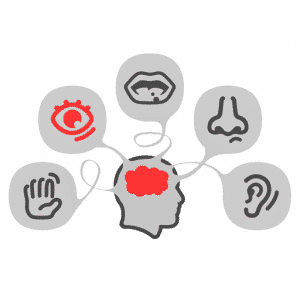
Make a list of all Visual words you know. And maybe if you want to excel in this exercise, you start to generate a 1000 examples of it. Remember, the more you make it a rhythm, the sooner it becomes a skill that you can utilize anywhere, anytime!
Take the following example and study it:
Person A: I am willing to invest in this idea. I see the big picture of it.
Person B: Imagine what the picture looks like when you have succeeded. Probably it is a movie you are going to produce!
In this example, both persons use the same representational system. They use Visual Predicates in their language.
Now there is something as Rapport, we will blog about later on. Rapport in short is the ‘feeling’ between two or more persons that they understand each other.
As a result, there is better understanding between the two of them.
Key takeaway from this part of this article is to use the same Representational Predicate in your language as your counterpart does. It generates Rapport!
So, by now you understand the Visual part, here we go with the Auditory or Audio part.
In NLP Auditory breaks down into two general parts; Internal and External. Just the same as you have learnt in the Visual part. We can hear things from the outside and we can talk to ourselves in your head. No one hears it, except you! An example of Internal is remembering how your favorite song sounds like, remembering your favorite family member talks. There are legions more. Just say only the alphabet inside your mind and you have a great example of Auditory Internal.
Examples of Audio External is for example hearing a car drive near to you or your favorite song is being played at the radio.
So every audio word that comes from the inside is called Auditory Internal. Every audio that comes from the outside, we call in NLP Auditory External.
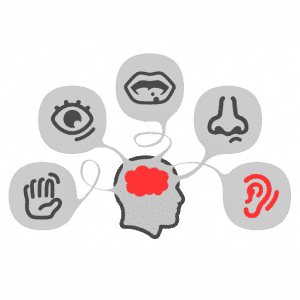
Excercise by listening to the language your partner uses. Only Listen! What Representational System is it? Practicing this often makes this skill a second nature! You become quickly a master in it!
(To give you a head start, here are a few examples: hear, silence, hush, make music, harmonize, quiet as a mouse, sound, sounds like music, tell, squeak, melody, deaf, tune in/out, voiced an opinion, listen, roar, rings a bell, resonate, clear as a bell, purrs like a kitten, on another note, loud and clear, give me your ear. – Do not tell anyone else we gave you this!)
Take the following example and study it:
Person A: I am telling you, my idea sounds great!
Person B: Yeah! I can hear the music when your idea comes to life.
In this example, both persons use the same representational system. They use Audio Predicates in their language.
Now there is something as Rapport, we will blog about later on. Rapport in short is the ‘feeling’ between two or more persons that they understand each other.
As a result, there is better understanding between the two of them.
Key takeaway from this part of this article is to use the same Representational Predicate in your language as your counterpart does. It generates Rapport!
Until now we have covered Visual and Auditory in the NLP Representational Systems. Let’s go with Kinesthetic. Everyone has feelings right? Again, the Kinesthetic part breaks down into Internal and External.
You can feel a headache, which is a Kinesthetic Internal experience, right? We do hope for you you feel beautiful from the inside ;).
Can you feel the wind blow on your skin? That is right, that is a Kinesthetic External experience! See how simple it is!
Already running ahead, here is a list of Kinesthetic words or short phrases to get you started recognizing them: Grasp, feel, catch on, unfeeling, smooth operator, heated argument, throw out, pull some strings, concrete, firm foundation, get a handle on, hard, sharp as a tack, scrape, get hold of, solid, touch, soft, tap into, make contact, get in touch with, hand in hand, hang in there
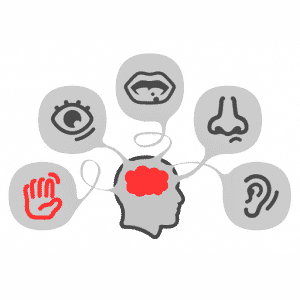
Consequently, as an exercise you can start to listen to the language other people outputs. What are they talking about? Is this person talking in Kinesthetic mode? And if yes, check if their eyes move accordingly. Feel what happens when you start talking back in Kinesthetic mode, to build up Rapport. And even more interesting, what happens if you answer in another part of the Representational System?
Take the following example and study it:
Person A: I do feel very well!
Person B: Can you be more specific please? What do you sense?
In this example, both persons use the same representational system. They use Kinesthetic Predicates in their language.
Now there is something as Rapport, we will blog about later on. Rapport in short is the ‘feeling’ between two or more persons that they understand each other.
As a result, there is better understanding between the two of them.
Key takeaway from this part of this article is to use the same Representational Predicate in your language as your counterpart does. It generates Rapport!
In NLP Olfactory is one part of the Representational System. An example is: “Smelling how great that apple-pie smells!”. Or maybe a more nasty one: “It smells like dog-shit!”. There are legions more. Just say only think about food and the smell of it and a legion of examples will popup. Olfactory is relating to smell or the sense of smell.
Olfactory events, smell you experience are accompanied most of the time with Kinesthetic events. The smell of a specific product will give you a specific feeling.
Olfactory breaks down into two parts: Internal and External. An example of Olfactory Internal is that you start to remember how you felt when you entered grandma’s house and got the smell of freshly baked cookies, a hint of cinnamon and other powerful herbs. Are the cookies here now? No they are not. You just remember a situation that is good to you and you can smell those nice cookies again!
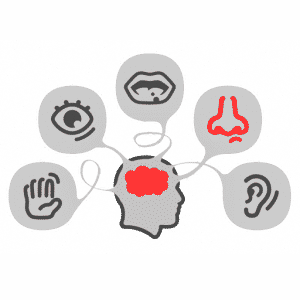
A good start and exercise is to make lists of Olfactory words. Just to exercise your recognition system for the words that come to you. And when you have a hundred or maybe more, start to classify them in Internal and External experiences. And as a highly subjective experience and exercise; are those words Remembered or Constructed? Remember that the quicker you are with this tool, the more it becomes useful in your daily life!
An example of Olfactory External is more direct, here in the now!
Imagine when you walk on the street and you smell someone BBQ great meat. Immediately your thoughts are like “Hmm, I can have a piece …”. Read the following words as an example for what we are about to tell you: It smell’s good, great aroma, sour smell, I can smell the victory, I smell fear, sweet, pungent, fresh, stale, putrid, chemical, burnt. As you already notice, all of these are examples of the Olfactory part of the Representational System in NLP.
When you associate yourself with your favourite dish, really think about what taste you like, your mouth start watering and be careful not to start drooling.
And there is the actual taste. Imagine you eating your favorite dish, how would you feel? In NLP Gustatory is all about taste and the sense of taste.
In NLP Gustatory breaks down into two general parts; Remembered and Created. Ask yourself when you had that wild mood and discovered two separate kinds of taste and you combined it? Did it taste as expected?
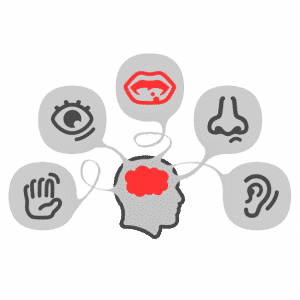
Another exercise is to make lists of Gustatory words. As a result it trains your recognition for the words that come to you. And when you have a hundred or maybe more. And as a highly subjective experience and exercise; are those words Remembered or Constructed? As a result, remember that the quicker you are with this tool, the more it becomes useful in your daily life! See what works for you and see what does not. I am sure that once you get the hint, it tastes like more!
Read the following words as an example for what we are about to tell you, just to get a taste of it:
As you already notice, all of these are examples of the Gustatory part of the Representational System in NLP.
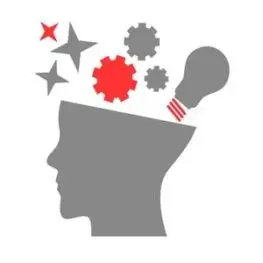
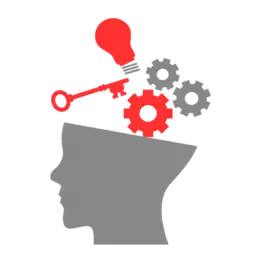
Mind Tools provides NLP Practitioner and NLP Master Practitioner Trainings and Certifications. We educate you according to the renowned, latest and highest standards set by the Society of NLP. We will train you thoroughly in all the corners of Neuro-Linguistic Programming and some extras we learned from Richard Bandler directly.
Our Licensed NLP Practitioner Training starts in:
On Checkout use the code NLPNOV25DISCOUNT and gain an extra 10% off our already discounted price.